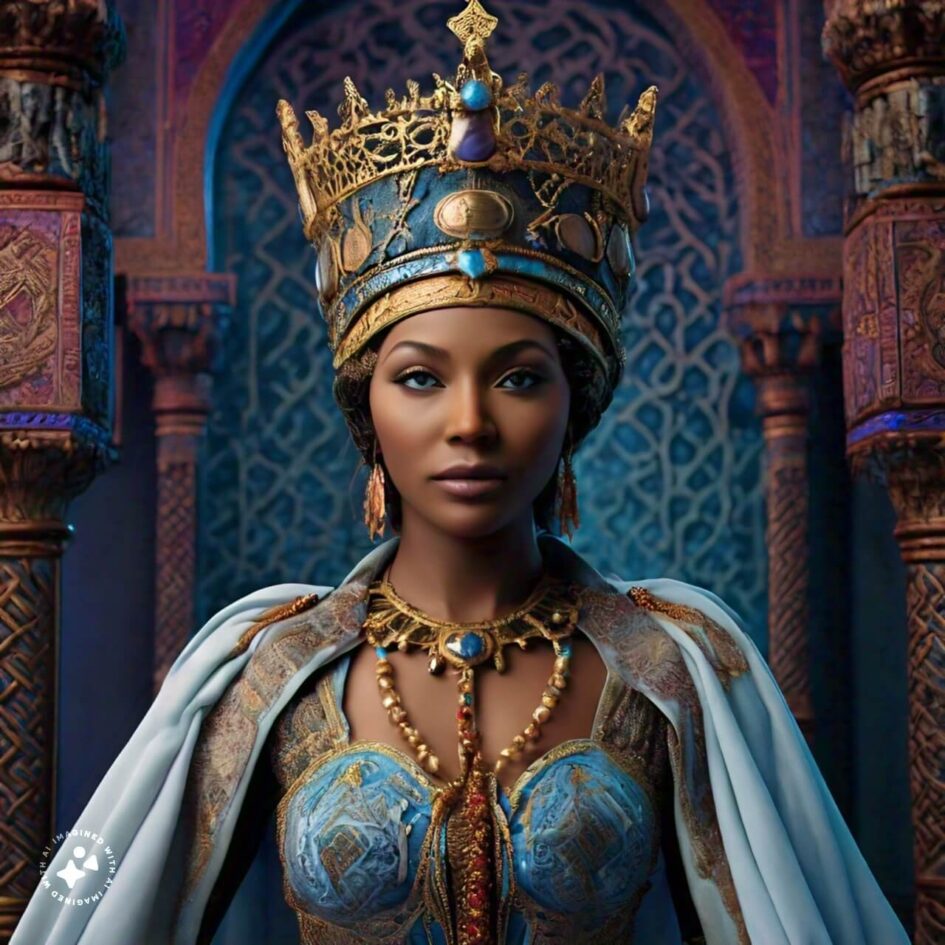Forward
By Robin Washington
March 20, 2024
It’s not at all surprising that a Jewish newspaper would publish an illustration of Queen Esther just before Purim. But a portrait of Esther as Black — dark skin, dark hair and braids — is bound to get attention.
Lahavah Hila of Brooklyn noticed it immediately.
“Hey, Jewish Press! I love your choice of picture for Esther HaMalkah! Big change from stuff I’ve read in your publication. Keep it up and I’ll have to renew my subscription!” she posted on Facebook on March 15, adding: “Kol ha Kavod, JP!”
Rishona Campbell of Harrisburg, Pennsylvania, saw Hila’s post and started a Facebook thread of her own. “Oh wow — the Jewish Press put this out today!? And to think, just 15 years ago, you rarely saw any people of color illustrated in Jewish publications,” she wrote. “A dark skinned Queen Esther in a Jewish periodical? Quite a leap.”
Their posts and those on other pages fueled scores of responses about the computer-generated image, which the paper credited as having been created by Meta AI. Both Hila and Campbell are Black — Hila is Orthodox and Campbell describes herself as Conservadox — and familiar with the weekly paper geared toward the Orthodox community. Hila is a current online subscriber (the image was run in print and the paper’s electronic e-edition) and Campbell is a former reader who says she stopped looking at it when the publication shifted to the right in recent years.
That political leaning was most apparent in the paper’s endorsement of President Donald Trump for reelection in 2020, as well as the prosecution of its former editor, Elliot Resnick, who pleaded guilty earlier this year to felony charges of obstructing law enforcement during the Jan. 6, 2021 storming of the nation’s Capitol. In 2021, the newspaper said the editor’s personal political views should not be considered different from those of any other journalist.
Regardless, the anti-diversity stance of the right with which the paper has been associated is what made the image surprising. Campbell said she wondered at first which Jewish Press people were talking about. Hila, in her posts praising the illustration, said she was told on Facebook by the wife of current editor Shlomo Greenwald that the decision to run it was deliberate.
“She made it clear that it was intentional,” Hila said. “So I’m just wondering, what were you thinking, Mr. Greenwald?”
Greenwald did not return requests for comment on the decision to run the illustration or how it was created — whether the paper’s staff programmed the Meta AI generator to make Esther Black or if artificial intelligence decided that for itself.
The use of AI was also a topic on the Facebook posts, most of which praised the drawing, though there probably were other groups I didn’t see that were less appreciative.
If Esther’s complexion was wholly machine-generated, it could feed into the growing trope that artificial intelligence biases diversity over accuracy. An article in the Free Press cites former Google employees making that claim, saying the computers churned out images of the Founding Fathers as Black and other historical inaccuracies.
To test it, I asked Meta AI to create Esther images for me, and received both dark-skinned and light on the first try.
But a Black Esther isn’t automatically a historical inaccuracy, though some of the commenters suggested it would be.
“People said, ‘Oh, she was Persian.’ No, they were living in the Persian Empire. But they weren’t Persian people. They were people in exile, you know, living in another land,” said Hila. “I’ve read in places that refer to her being olive brown, olive tone.”
As for the color consciousness of AI, consider also that computers have notoriously created images of people with three arms. Of course the programs have to be tweaked, not trashed entirely because of a politically driven false dichotomy of diversity being opposed to accuracy.
Why does Esther’s color matter?
For that, the answer comes not from pundits or social media posters but the reaction of a 7-year-old.
“My daughter has brown skin and is enraged (as am I) that in all of the pictures of Esther, she is white. This ripped up children’s book is a result of her hurt and anger,” Meredith Morton of Los Angeles wrote serendipitously this week in an unrelated Facebook group.
Her daughter, Phoenix, was adopted and is of Hispanic descent. Morton, who is Ashkenazi, said she told Phoenix that Esther was also adopted and had brown skin. When she presented her daughter with a children’s book depicting Esther as white, the child fumed.
“She immediately said ‘I hate Jewish. Why did they make Queen Esther white?”
Commenters responded to Morton’s post recommending children’s books that indeed showed Esther with dark skin — though Morton said one of those was actually from a Christian publisher.
I too saw her post, and immediately shared the Jewish Press picture.
“I showed it to her in the morning,” Morton said on Tuesday. “Her face lit up! I wish you had seen it. It was definitely a happy ending.”
And not a computer mistake.


 WordPress
WordPress